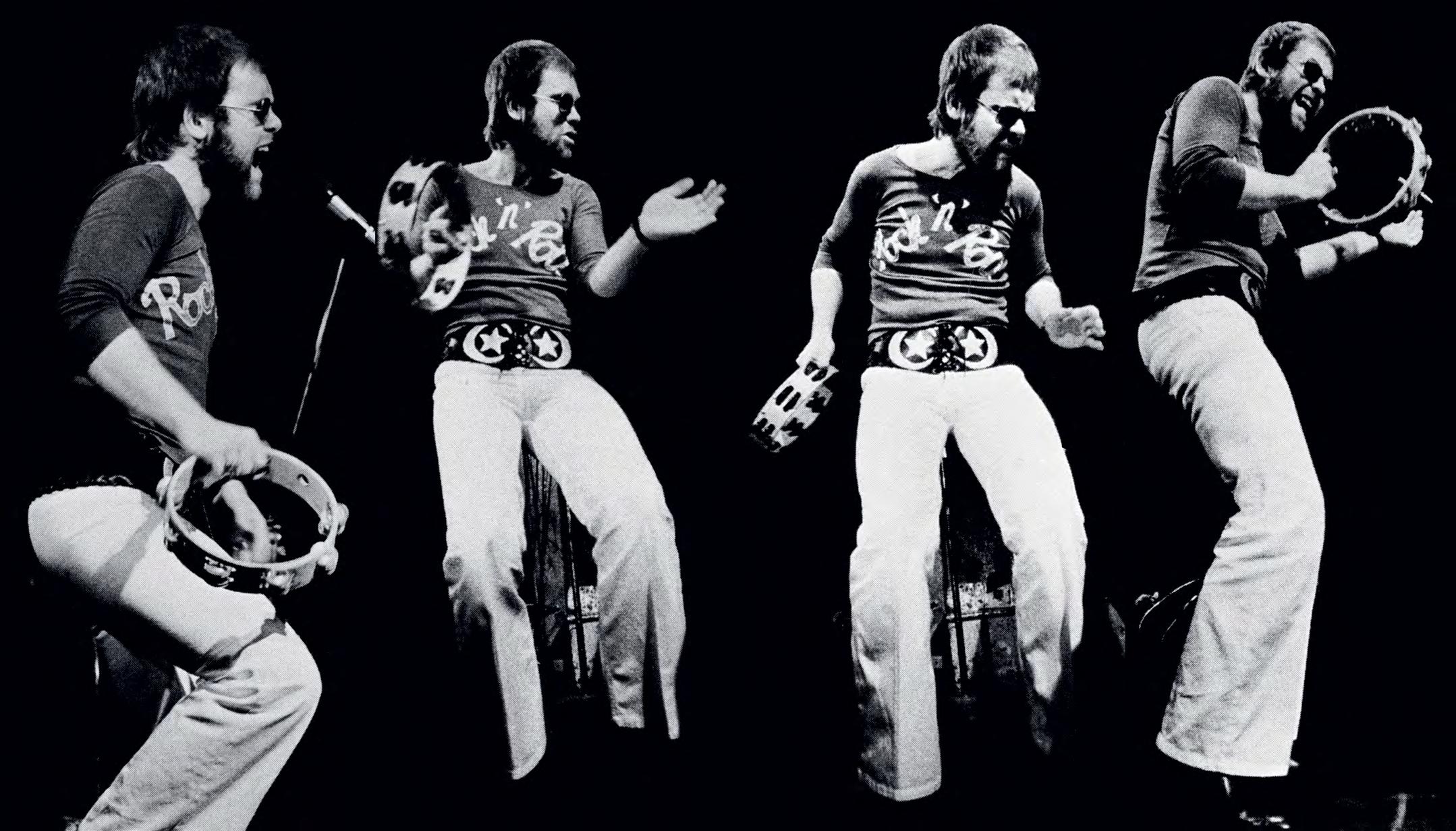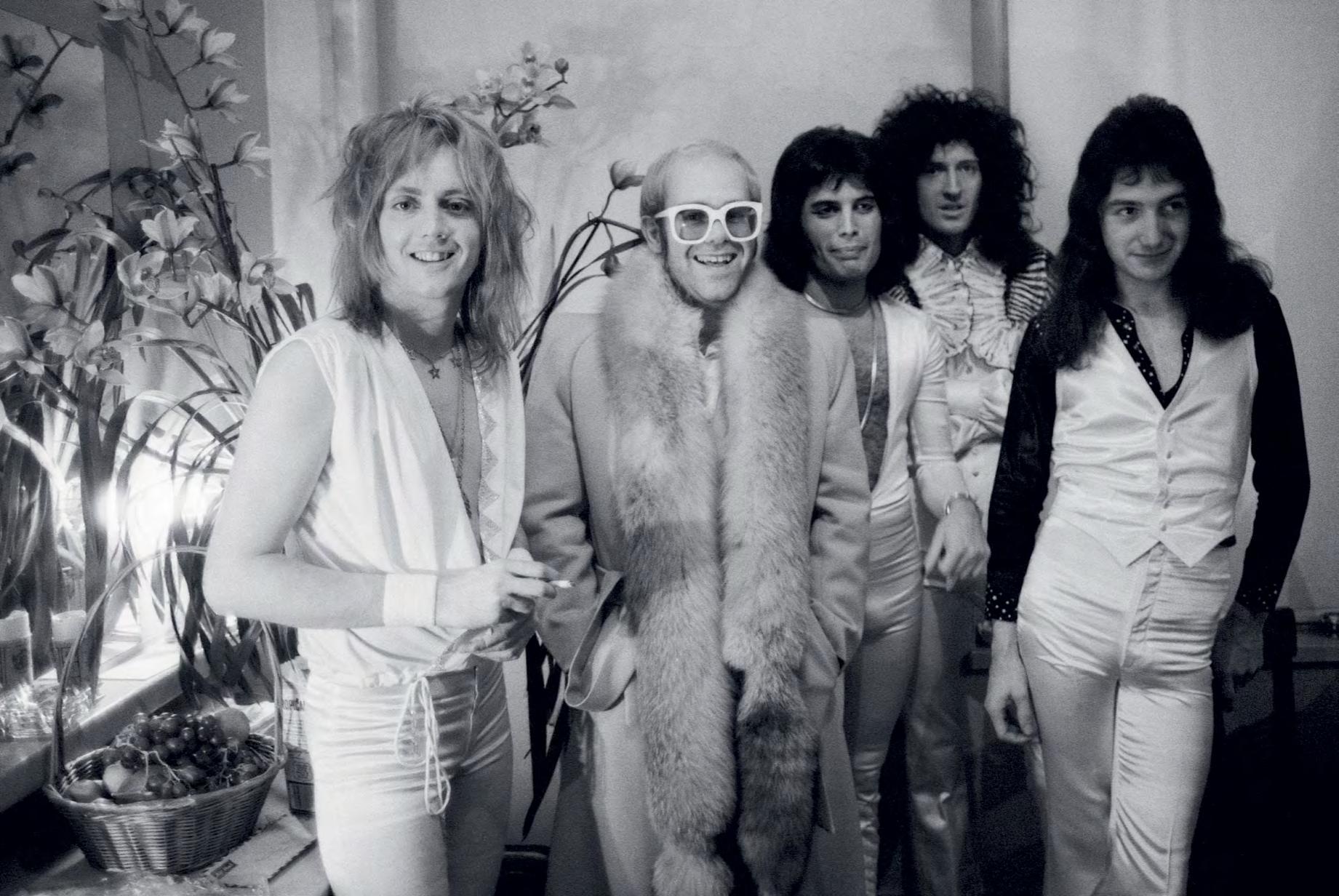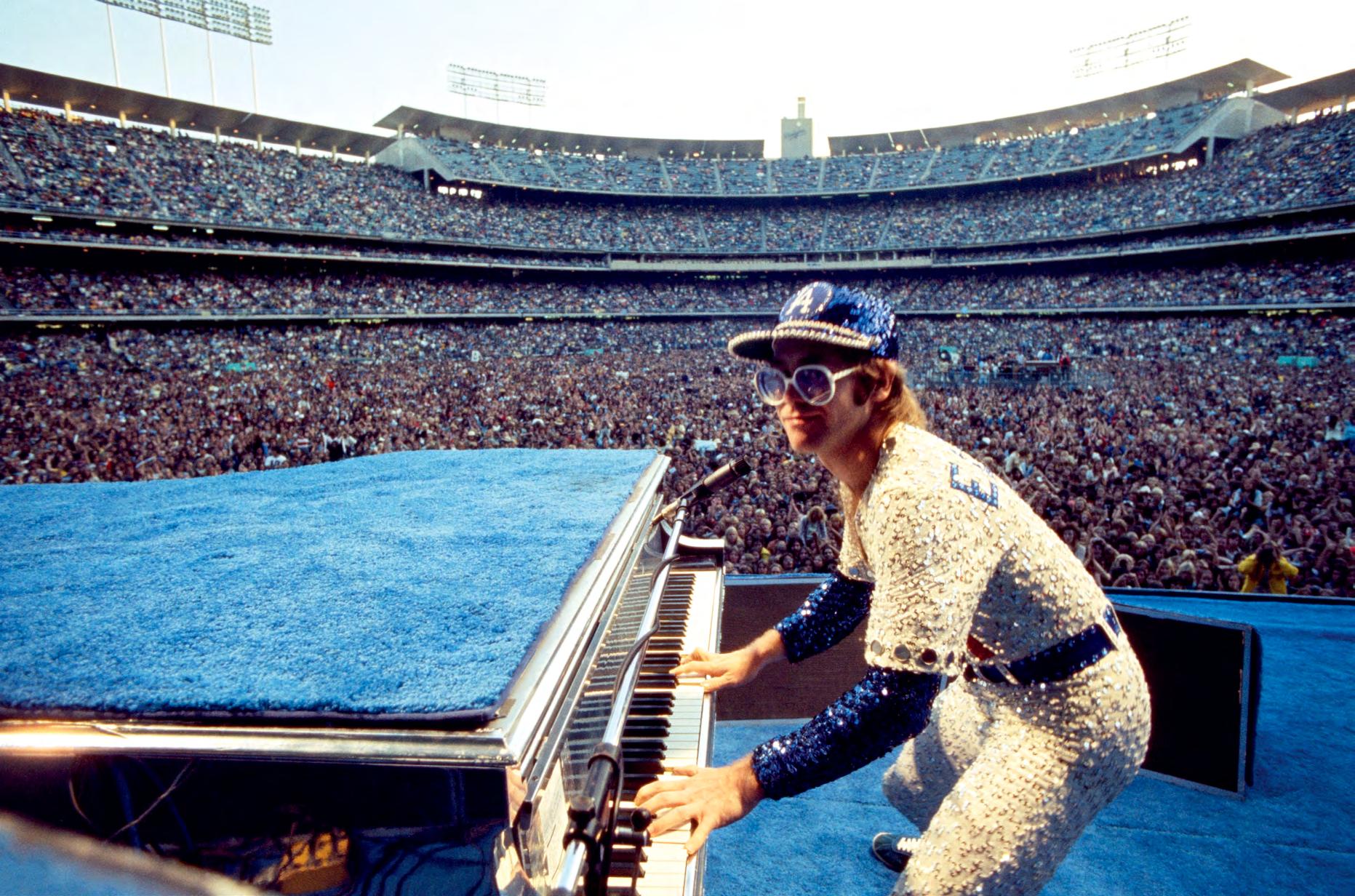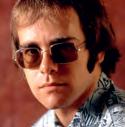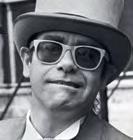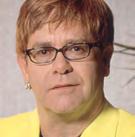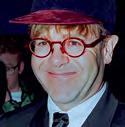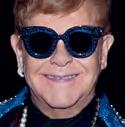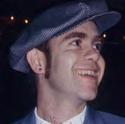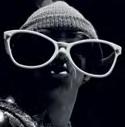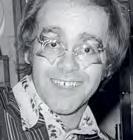GERED MANKOWITZ
I had been photographing musicians for more than a decade by the time I met Elton John. My career had taken off in the mid-1960s, working with rock and roll acts like The Rolling Stones, Jimi Hendrix and The Yardbirds. It was around this time that my longtime friend and collaborator, the singer-songwriter Dana Gillespie, mentioned she was working on cover songs for Woolworths with a talented guy called “Reg”, who was trying to catch a break as a songwriter. So, when he shot to fame in the early 1970s under the name Elton John, I wasn’t surprised. His early music interested me, but I was working with other artists at the time, so our paths never crossed. That changed in 1977, when my good friend David Costa, the art director at Rocket Records, invited me to work on the cover of Elton John’s Greatest Hits Volume II.
Elton came to my studio on Great Windmill Street in Soho, London, where we had set up an elaborate scene. The idea was to stage a series of “great” sporting moments, each featuring Elton enthusiastically messing up a different sport – a play on the phrase “greatest hits”. In those analogue days, we tried to do as much as possible in-camera. Retouching was expensive and largely out of our hands, so I used all my experience in creating illusions – suspending objects, manipulating perspective, setting up forced compositions. We laid down artificial grass, shot the background separately, and painted a night-time sky onto glass behind it.
Elton was always fun to be around, but there was a certain amount of tension and fussing leading up to every shoot – a lot of which emanated from the people around him. But once Elton stepped onto the set, he embraced the concept entirely. He turned up in full cricket whites, but with one crucial Elton-esque touch: a pair of bright pink trainers. It was all very theatrical, very playful, very Elton.
When you’re working in a locked-off studio set-up, there’s not much room for spontaneity. The ball, the flying bails – it all had to work from one precise angle. But once we had the shot, Elton began improvising, striking bizarre poses around the stumps, playing with a strange mask, lounging on the artificial grass. Looking back at the negatives, those odd moments add another layer of surreality to the whole thing.
A few years later, David called me again, this time to shoot the photography for Elton’s album Leather Jackets . The plan was to photograph Elton at the recording studio in Hilversum in the Netherlands, where he was making the album and where we could set up a photography studio. He had one very specific request: he wanted to be photographed in a customised Sinclair C5, a rather eccentric electric tricycle.
So, I tracked one down in the UK, took it to a garage, and had it tricked out with chrome wheels, go-faster stripes, a whip aerial, racing
IT WAS ALL VERY THEATRICAL, VERY PLAYFUL, VERY ELTON
mirrors, the works. We shipped it over, set it up in front of a grey painted canvas backdrop, and showed it to Elton.
He took one look at it and said, “It’s a bit silly, isn’t it?”
And that was that. The C5 was quietly wheeled away (later to be auctioned for charity) and replaced with the idea of a mock motorcycle gang. We quickly sourced some Harley-Davidson hardware, dressed Elton and the band in leather jackets, and staged a group portrait.
Elton was always confident as a performer, but when it came to still photography, he needed reassurance. He wasn’t always certain about how he looked, and he appreciated a bit of subtle guidance to make sure he felt good in the image. In the end, though, the biker aesthetic – attempting to balance butch and camp – wasn’t one he could fully embrace for an album cover. It became the album’s centre spread instead; for the cover, I photographed a friend with a similar build to Elton in a cut-off leather jacket, which David Costa then reworked into a Warhol-style collage.
I went on to photograph two other covers for Elton with David, both of which were large and complicated still-life studio shots. The first was for Live in Australia with the Melbourne Symphony Orchestra in 1987, which featured one of Elton’s grand pianos, and in 1988, we did Reg Strikes Back , which featured dozens of Elton’s stage costumes. Elton, unavailable for either shoot, was represented by a portrait hidden within the shot.
Elton John is a phenomenal artist. A true showman and a performer of the highest order. Looking back at our shoots, I see how much of his image was carefully considered, even when it seemed spontaneous. He understands the theatre of it all – how to give people a version of himself that is larger than life.
Gered Mankowitz has shot countless rock icons, contributed to many leading magazines and taken prizewinning images for the advertising industry. In 2016, he was awarded the distinction of Fellowship by The Royal Photographic Society.
EVEN TODAY, DECADES AFTER THAT STRAW BOATER PHOTOSHOOT, WHENEVER WE MEET, HE STILL GREETS ME WARMLY WITH, “MRS. HARRIS, HOW ARE YOU?”, FOLLOWED BY A HUG
THE WHO WERE CLOSING THEIR WORLD TOUR AND ELTON WAS ONE OF THE GUESTS. NO BIG ACCESS, NO SPECIAL TREATMENT –I JUST NEEDED TO GET CLOSE ENOUGH, STEADY MY HANDS, AND CAPTURE THE MOMENT
Elton John: ICON is more than a collection of photographs; it is a celebration of a man who has touched the lives of millions through his music, his style, his generosity and his unwavering authenticity. Above all, it is a testament to Elton’s enduring legacy. Featuring the work of 19 remarkable photographers, alongside reminiscences about their encounters and collaborations with Elton, this volume presents rare and unseen images, album covers, outtakes, portraits, and live performances.
Elton: ICON is a visually stunning tribute to one of music’s all-time legends.
Photography by:
VAL WILMER
ED CARAEFF
AMALIE R. ROTHSCHILD
GOVERT DE ROOS
DAVID NUTTER
ALLAN TANNENBAUM
SONIA MOSKOWITZ
GERED MANKOWITZ
NORMAN PARKINSON
BARRY SCHULTZ
ROB VERHORST
JANET MACOSKA
DAVID CORIO
PATRICK HARBRON
JIMMY STEINFELDT
DAFYDD JONES
BRIAN ARIS
MARK ALLEN
TERRY OʼNEILL
